#white deadnettle
Text

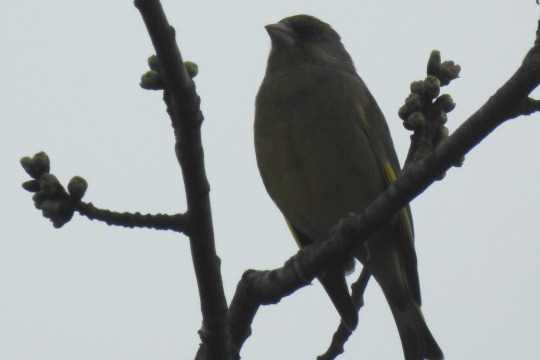





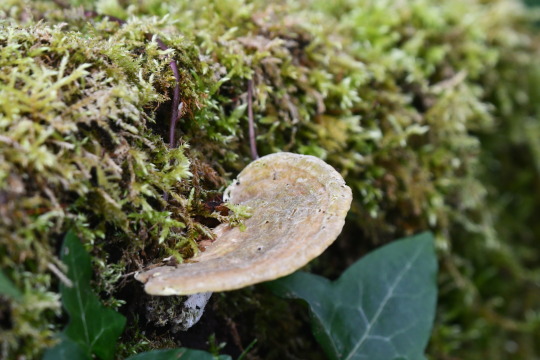
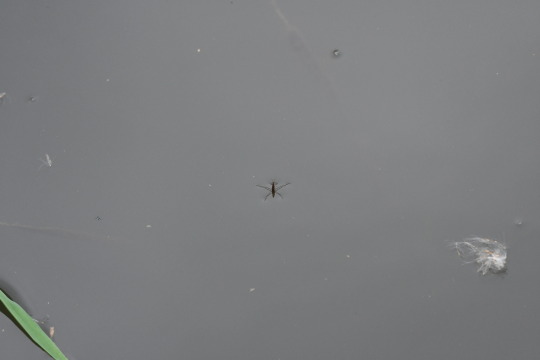
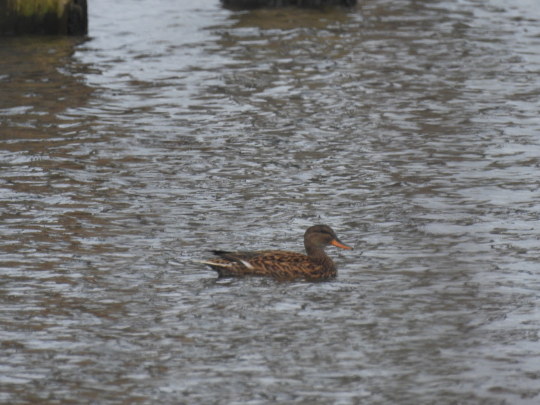
18th March 2024: Fishlake Meadows, Lakeside and others
Photos taken in this set are of; Song Thrush at Fishlake Meadows, Greenfinch when cutting through Lakeside, violet at Fishlake Meadows, beautiful views at both, mushroom and ivy at Fishlake Meadows, pond skater at Fishlake Meadows it was good to see a few of them and female Gadwall at Fishlake Meadows. Other highlights from the brilliant walk and time I spent at Fishlake Meadows and in Romsey today were Cetti's Warber and Chiffchaff near constant presences in sound and sight which was delightful, Water Rail, Great White Egret, Greylag Geese, Pochard, Treecreeper, Dunnock, Red Kite, Buzzard, Reed Bunting, Great Spotted Woodpecker heard, my first forget-me-not of the year, daffodils, white deadnettle, lots of lesser celandine and King Alfred's cake and turkey tail fungi with quite a few fungi enjoyed today. Great Crested Grebe, House Sparrow, Wren, Green Woodpecker heard and Grey Squirrel were other highlights on the cut throughs over Lakeside with my first ground ivy of the year seen between the locations.
#lakeside#fishlake meadows#lakeside country park#photography#birdwatching#romsey#eastleigh#cetti's warbler#forget-me-not#great spotted woodpecker#green woodpecker#song thrush#gadwall#greenfinch#violet#fungi#flowers#treecreeper#dunnock#red kite#buzzard#pochard#reed bunting#hampshire#england#uk#europe#world#nature#white deadnettle
10 notes
·
View notes
Text

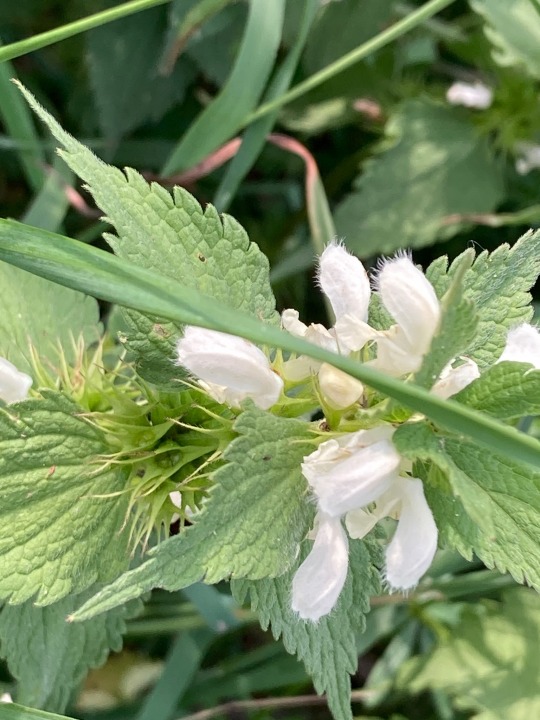

#white deadnettle#lamium album#flowering herbs#umbellifers#apiaceae#toxic plants#warty cabbage#bunia#wildflowers#gamla uppsala#uppsala#sweden
1 note
·
View note
Text
i had a lot of free time today so i spent like three hours documenting as many plants as i could identify in the 300-foot long parking strip i use as a garden. the amount of biodiversity in such a small place is WILD
#i had trouble identifying any of the grasses but there's at least 3 different species#there's two or three different species of dandelion type flowers#a teeny tiny white flower that's just about to bloom#a whole bunch of red deadnettles#some plants which i'm pretty sure are chickweed and nipplewort (heh)#and a single yellowrocket#the embankment across the sidewalk has english ivy himalayan blackberries and another flowering ground cover fighting for dominance#plus a few grape hyacinths being choked by grass#i saw so many finches and wrens and crows and jays and flickers#and so many insects!#aaaaa i love my garden
8 notes
·
View notes
Text
White deadnettle (Lamium album) wildflower photo I took 30/03/2024, near Smeaton, West Yorkshire, UK

#nature#nature photography#british nature#wild#deadnettle#dead nettle#lamium#lamiaceae#lamiales#white flower#white flowers#white floral#wildflora#wildflower photography#wildflower#wildflowers#wild flowers#flora#flower#flowers#flower photography#botany#plant photography#plants#plant#wild plants#wild plant#blooms#bloom#flowering plants
1 note
·
View note
Text
The knowledge of some common plants
Since many people don't know most of the plants around them, this is information on some plants that are commonly seen in many places throughout the world

This is Lamium purpureum, also called Purple Deadnettle.
It's called deadnettle because it looks like a nettle but it doesn't sting you
This plant is a winter annual—it grows its leaves in the fall, lasts through the winter, and blooms and dies in the spring
Its pollen is reddish orange. If you see bees with their heads stained reddish orange, it is likely because they have visited Purple Deadnettle
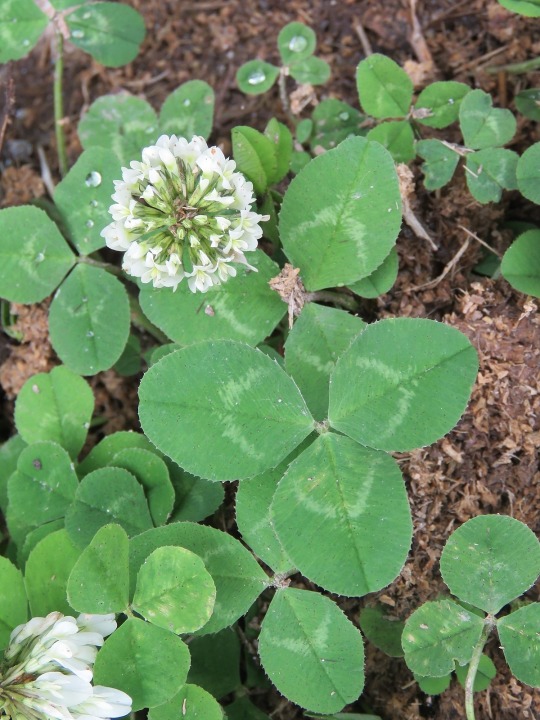
This is Trifolium repens, white clover
It is a legume (belongs to the bean family) and fixes nitrogen using symbiosis with bacteria that live in little nodules on its roots, fertilizing the soil
It is a good companion plant for the other members of a lawn or garden since it is tough, adaptable, and improves soil quality. According to my professor it used to be in lawn mixes, until chemical companies wanted to sell a new herbicide that would kill broadleaved plants and spare grass, and it was slandered as a weed :(
It is native only to Europe and Central Asia, but in the lawns they are doing more good than harm most places
Honeybees love to visit clover
Four-leaf clovers are said to be lucky
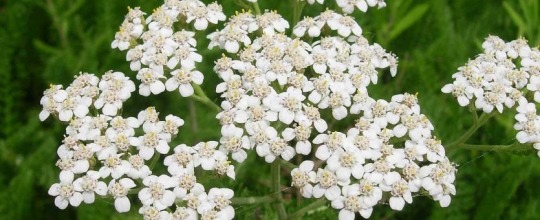
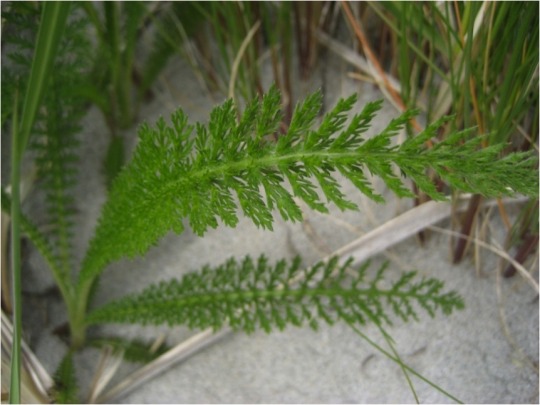
This is Achillea millefolium, Common Yarrow
It has had a relationship with humans since Neanderthals were around, at least 60,000 years, since Neanderthals have been found buried with Yarrow
Its leaves have been used to stop bleeding throughout history, and its scientific name comes from how Achilles was said to have used Yarrow to stop the blood from the wounds of his soldiers. A leaf rolled into a ball has been used to stop nosebleeds
It is a native species all throughout Eurasia and North America

This is Cichorium intybus, known as Chicory
The leaves look a lot like dandelion leaves, until in mid-spring when it begins growing a woody green stem straight up into the air
Like many other weeds, it has a symbiotic relationship with humans, existing in a mix of domesticated or partially domesticated and wild populations
It is native to Eurasia, but widespread in North America on roadsides and disturbed places, where it descended from cultivated plants
Its root contains large amounts of inulin, which is used as a sweetener and fiber supplement (if you look at the ingredients on the granola bars that have extra fiber, they usually are partly made of chicory root) and has also been used as a coffee substitute
A large variety of bees like to feed upon it

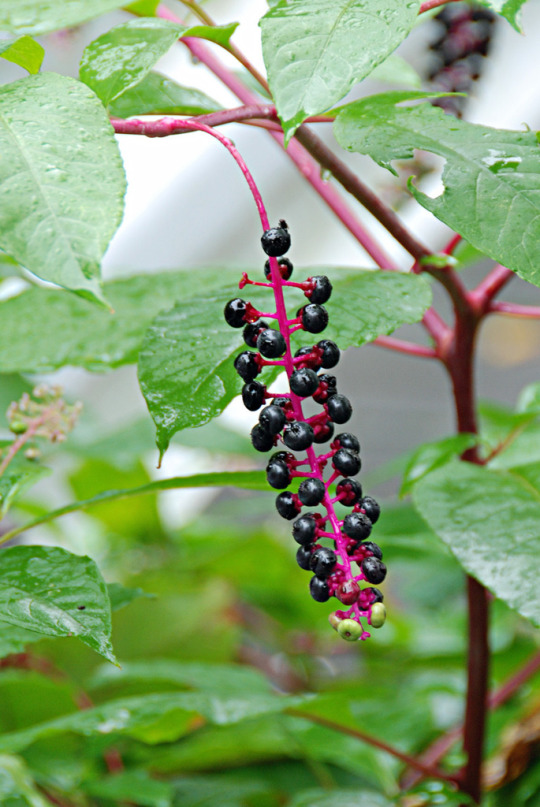
This is Phytolacca americana, known as Pokeweed
It is easily identified by its huge leaves and its waxy, bright magenta stem
It can grow more than nine feet tall from a sprout in a single summer!
If you squish the berries, the juice inside is a shocking magenta that is so bright it almost burns your eyes. For this reason many Native American people used it for pink and purple dye.
It is a heavy metal hyperaccumulator, particularly good for removing cadmium from the soil
All parts of the plant are poisonous and will make you very sick if you eat them, however if the leaves are picked when very young and boiled 3 times, changing out the water each time, they can be eaten, and this is a traditional food in the rural American Southeast, but I don't want to chance it
British people have introduced it as a pretty, exotic ornamental plant. I think that is very funny considering that here it is a weed associated with places where poor people live, but maybe they're right and I need to look closer to see the beauty.
If you see magenta stains in bird poop it is because they ate pokeweed berries- birds can safely eat the berries whereas humans cannot

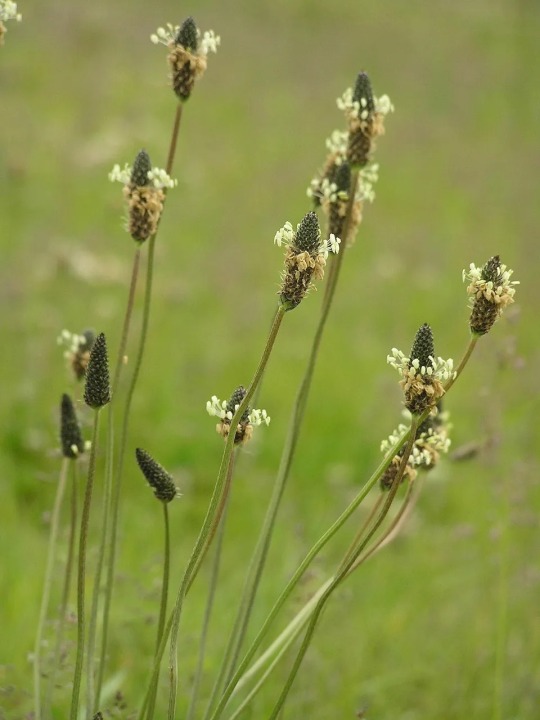
This is Plantago lanceolata, Ribwort Plantain
It grows in heavily disturbed soils, in fact it is considered an indicator of agricultural activity. It is successful in the poorest, heaviest and most compacted soil.
The leaves, seeds, and flower heads are said to be edible but the leaves are really stringy unless they are very young. Of course, it is important to be careful when eating wild plants, and make sure you have identified the plant correctly and the soil is not contaminated
I have also heard the strings in the leaves can be extracted and used for textile purposes
and that's some common plants you might often see throughout the world
#just remembered i had this in my drafts#i forget why i didn't post it immediately#anyway#plants#the ways of the plants
5K notes
·
View notes
Text
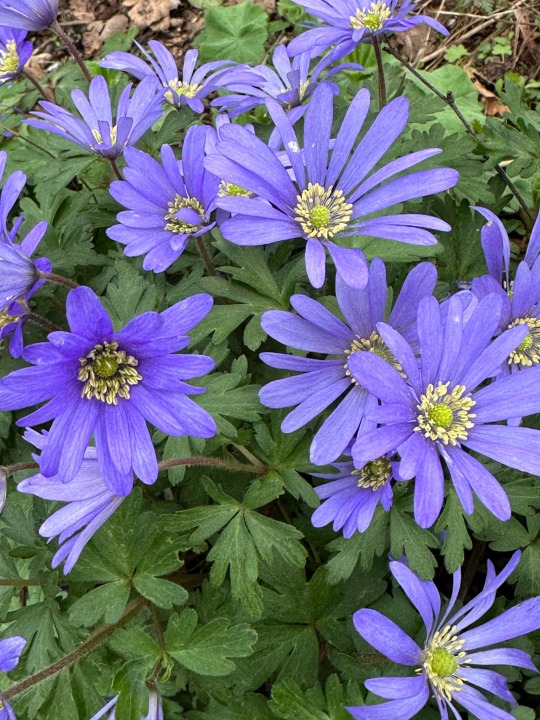

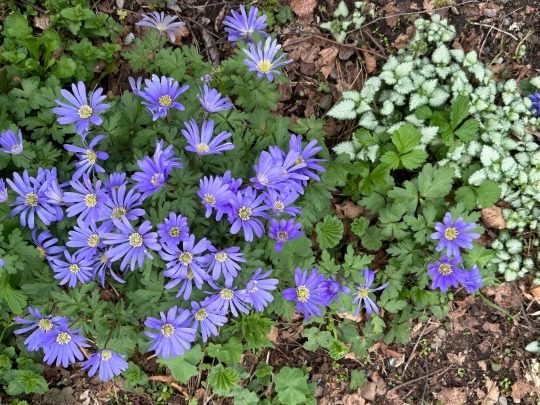
Plant of the Day
Friday 19 April 2024
In the shade of a woodland garden the Anemone blanda (winter windflower, Balkan anemone) were flowering. The flowers are an intense blue, but the species can produce shades of pink and white. This spreading perennial here contrasts with the silver evergreen foliage of Lamium maculatum 'Beacon Silver' (spotted deadnettle).
Jill Raggett
#anemone#winter windflower#Balkan anemone#Lamium#spotted deadnettle#blue flowers#silver foliage#woodland garden#shade garden#plants#horticulture#gardens#garden#Dunkeld#scotland
95 notes
·
View notes
Text
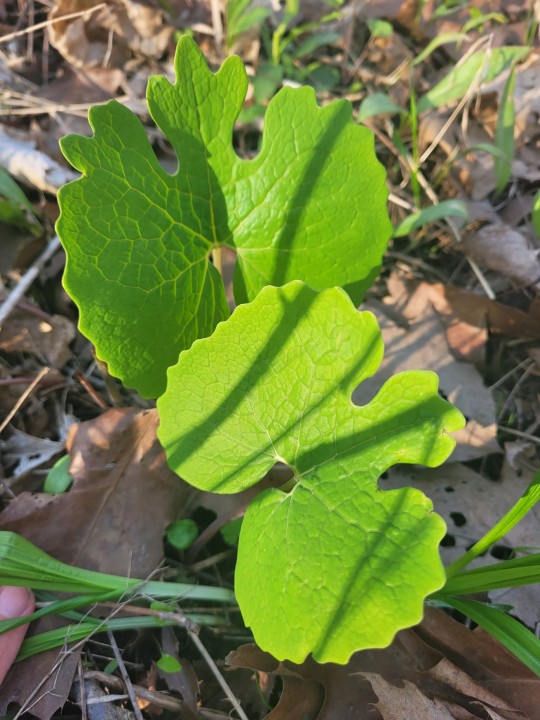
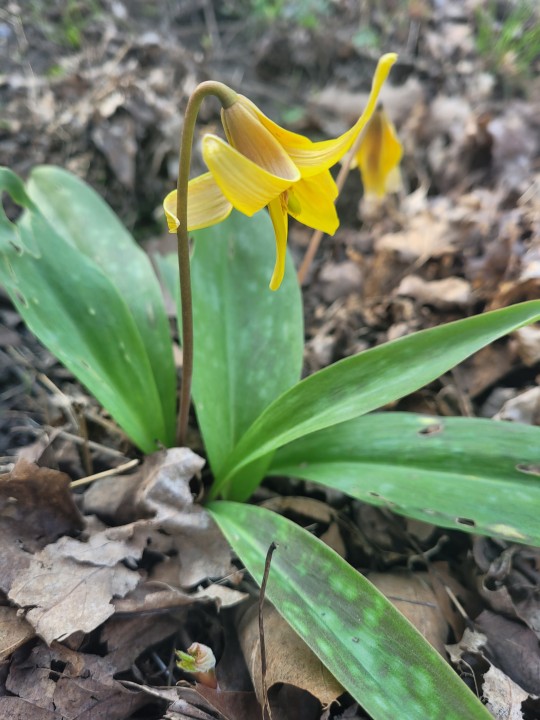
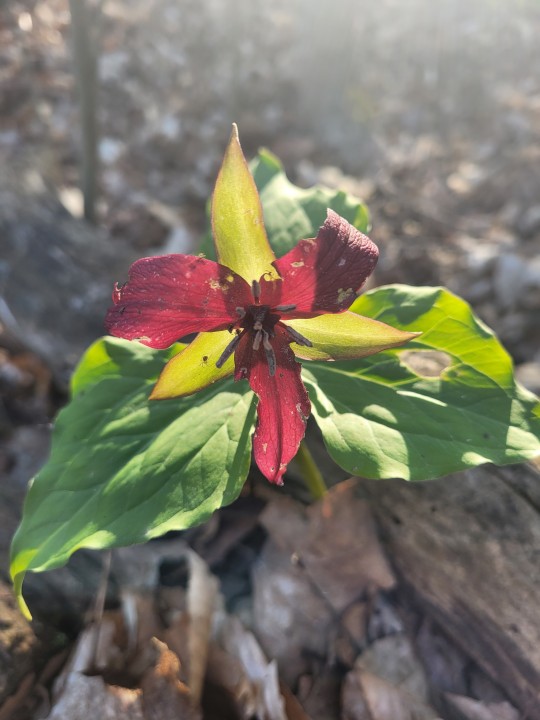
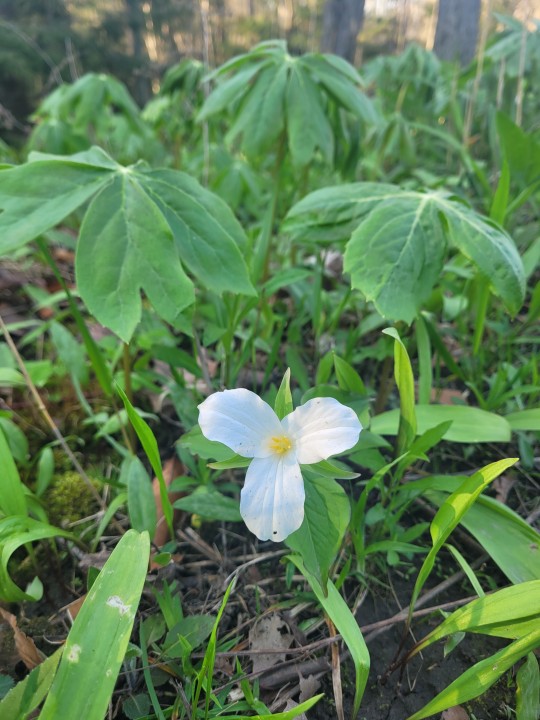
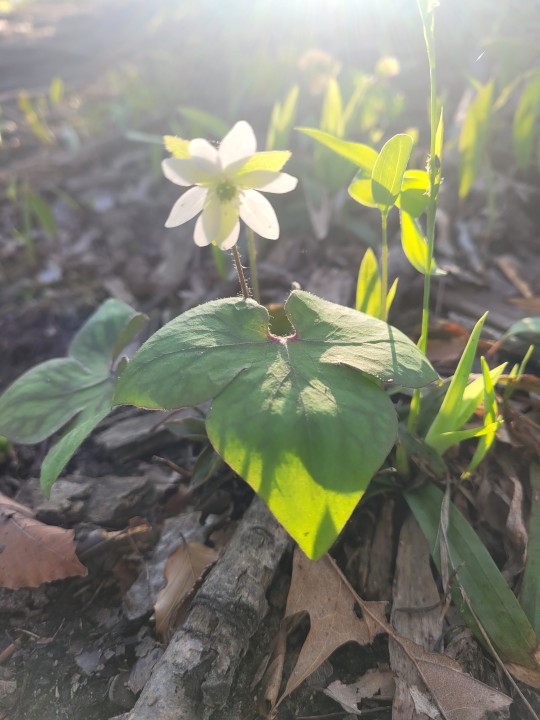

Sights from my nature walk after work today! Finally finally spring has some to Southern Ontario. (May 1, 2024)
From top left: bloodroot leaves, trout lily, wakerobin trillium (my first time ever seeing it in the wild!!), white trillium (grandiflorum), hepatica, purple deadnettle (my favorite weed, pictured here with its best friend, the dandylion.)
13 notes
·
View notes
Text
good news: was doing some morning invasive removal (woman vs. porcelainberry part 12759) in my gay little Parks Department hat and when I was leaving the park, the entire like....upper management of said Parks Department for the borough was there doing a "site visit" featuring J.S. #3, J.(L).S., and White Guy Named Chris #3, all of whom gave me a fist bump/hug/high five. promises to text each other were exchanged and as they were walking away someone said something about "beach plum planting sites". we're so fucking back.
bad news: the area where I was doing said invasive removal is, like some many other spots in this park, ENTIRELY invasive species. on the tree side, we have two big ass white mulberries (invasive; although I think I spotted a groundsel tree [native] on the side which would be a huge plus); the dreaded porcelainberry; on the ground is bedstraw, mugwort, burdock, deadnettle, and speedwells (all invasive); and then in the water there's fucking phragmites!!!!
can a bitch get some goldenrod or swamp azaleas? some fucking marsh mallow (non-native sorry) or bloodroot or some poverty grass (yes, those are real plant names)?
#I've started taking matters into my own hands by planting bee balm seeds And Waiting but my budget is limited like yallah you slags#White Guy Named Chris no. 3 is actually my favourite of the White Guys Named Chris. such a mensch he is#that actually reminds me I need to email J.S. no 1 immediately#dispatches from the park
7 notes
·
View notes
Text
you know what im just putting it in a separate post. this is my own ulixes backstory - content warning for parental+familial abuse/neglect.
Another stupid mistake.
Ulixes had forgotten to wash and put away the dishes. This had the immediate effect of enraging his father - who was hitherto consumed in a bad mood - and the expulsion of Ulixes from the family home for the night. Moronic of himself, Ulixes thought, to provoke him so thoughtlessly. Muffled in the kitchen and its yellowing white tiles with that awful, guttural shout, until Ulixes turned and ran - ran out the back door, to where his father would not follow under the siren call of another pyrholidon from the fridge.
And so he sat, looking up at the house and the pale sky above it. An entire wooden thing slumping dauntless before him. It rotted and shook and groaned through stormy nights, as if aware of its absurd and depressing existence. Embarrassed by the silence of its residents. Apathetic to the omen of another hard winter. On the little porch around the back that nobody ever used - where it wouldn’t dampen his trousers - Ulixes wondered into the thrice-unread pages of his book: why doesn’t it just fall?
Yet, the clocks kept turning, and the mice wouldn’t stop running through the pantry. Little scampering-scratching in the walls beside his bed. The pigeons that nested in the chimney each Summer. Ulixes Bücher, tucked away where no-one would try to find him. Empty pantries. Cold bed. Crumbling chimney. Ulixes, tucking himself away. That was the way of things. That was how nature was slowly reclaiming the Bücher household. Day by day. Night by night.
Especially those long, long nights which were as black as pitch and twice as humid. Where he as a little boy would toss and turn and dream of the entire wretched house collapsing. In those dreams, he would wake up in the morning, surrounded by and buried in rubble - the mounted deer head, the ripped clothes, the four-poster bed in his parent’s room, the fine china that was never used - and Ulixes, sole survivor, a tiny dot in the wreckage, emerging. Fifteen tumbling steps to the left, and he would happen upon the remains of the family jewels. In this childish fantasy, Ulixes would sell the jewels and move far, far away. It didn’t matter where. The house just needed to fall. So why didn’t it?
In a fit of frustration, he snapped his book shut. Wind tousled his hair as he meandered through the overgrown garden: through the long furs of grass - the deadnettle, which his older brothers would pick the flowers off to jokingly whip at him - past the old pine trees, all the way to the back. Here, a shed almost as old as the house itself stands vigil against the elements. A slightly brighter shade of wood, still dulled by years of use and disuse. A musky hint of rainy evenings past, warping the walls. Windowless.
And no lock, of course - nobody would just let themselves into here, not in the East. Not where you were picked off the street and sent back across the canal for the most minor of public infractions. Except, nobody in the Bücher household has repeatedly accessed this little hovel either. Perhaps since his grandfather, as far as Ulixes knows. He did woodwork, or something to that effect, in his spare time. Back when they employed house-servants, this place could possibly have gone over the rusting equipment with a dust-rag. Now, all the erstwhile sawdust has simply blown away; a blessing for the jacket on Ulixes’ back which is quickly going to become a mattress under the dented, discoloured workbench - one of the only things nailed to the floor.
He doesn’t know how many hours his grandfather spent here. By all accounts, he was a silent old man, praised by Ulixes’ siblings for scoring a once-in-a-lifetime engineering commission from a previously blossoming city. In fact, the Bücher household seem to have a thing for dying before Ulixes ever meets them. Apart from those who still remain in the house, he knows of one cousin who moved away to Jamrock, never to be heard of again. Every other member is locked in an eternal, poisonous game of one-upmanship over dinner, concerning wage brackets and managerial positions. Quoting the spiteful rants of his oldest brother - there used to be openings. And now there aren’t. Honest, skilled workers like he are forced back across the canal for work, where the jobs are cheap and the turnover is cheaper. His Aunt, spitting into a wine glass about mingling with the lower people, how the trickle-down up-swing has faded, how stagnancy has strangled her aspiration of a nice car and the subsequent respect that would blossom on everyone’s faces when she turns up in that.
They have made it abundantly clear that whatever blessed the Bücher family three generations ago is never doubling back. The repairs the home direly needs will never be happening. Even if they did, the resounding result would simply be putting a plaster on a stab-wound. It doesn’t matter how much junk his father sells to put him through a return-on-investment education. So, why doesn’t the house fall?
He breathes the afternoon light, perched in the doorframe; leaning. In contrast to the opulence of his grandparents’ tailor-made mansion, the shed is a utilitarian thing. Cuboid and sturdy, with its thick walls and insulated door - telling the tale of a person who would be complained away from the porch by neighbours or would not be dissuaded from partaking in outdoor hobbies in Winter. A floor softened by work boots. Flecks of paint and glue and oil staining in intervals. The whisper of pine needles reverberating around. So much wood, he thinks, like a little hole in a tree. A bird’s nest, from which he is watching the grey bulb of the sky grow dimmer and dimmer. Until the trees and the too-tall fence and the grasses turn into a shadow-puppet show. Until all Ulixes can hear is the wind. Until Ulixes can no longer read his book - only able to see a vague outline of his hands, and the stars still somehow shining through the city smog. Until he whistles, and the air stops whistling that jaunty little tune back into his ears, and the hairs on the back of his neck stand up. That is when he shuts the door to the shed.
It is warm, Ulixes’ little nest. Thrumming with that insulation, that warp-curved geometry. It does something comforting to your brain, such like a reinforcing example does for a belief you already hold. He parts his chapped lips, and pushes his tongue to the back of his throat. A little click of sound is released. A pushing of a particularly satisfying button - or the trigger pulled on an empty gun-barrel?
The click bounces off the walls. It is an instantaneous cacophony, finished in less than a second. But it reels back his mind from wandering back to earlier, where the dishes were stacked and dirty and his father’s face was…
Click. Click. Click.
Echo. Echo. It never fails. Nothing is used against him, here - where no one will look for him.
Ulixes opens his book to the middle before resting his head on it. He knows by experience the floor will mercifully not hurt his body come morning. A jacket, brown, coming apart at the seams, slung over his thin frame.
Tonight, he dreams again of the house falling down. The wind; terrible and exacting, will extricate the foundations from the tumour of Revachol East and tumble it in a chef-swirl across the street. Miraculously, it would ignore The Shed, just as Ulixes would awake the next day to ruins, only to completely disregard its contents in favour of walking into the encroaching Pale. As if there was something in there for him. In there, where the air whistles back at him.
#this boy has two refuges and it is Books and Shed#i hope i spelt pyrholidon correctly. oh well#i kinda left things vague here because i dont have a full family tree planned out or anything#and i dont really expect that to be happening anytime soon#i headcanon uli to be along the 'kim' line of 'repress everything until you forget it and then never think about it again'#which uhhhh. aha. i might be projecting. (<-they have DPDR)#it's MY flashfic and I get to choose the mental sickness#but unlike steban - ulixes doesnt mention his family in-game *at all*. he is at the book club to Follow Steban#and of course they align ideologically. but steban actually gives his ideas the time of day. he *listens* - despite not agreeing with#everything he says. he doesnt lash out. he is Gentle.#and what about that - to someone like ulixes - wouldn't make him want to follow steban into the pale?#also la revacholiere makes a cameo here. brief hints of what is to come.#disco elysium#ulixes bücher#echo maker#txt
33 notes
·
View notes
Note
i am curious about tge in-universe taranza pov botanical notes
White Wafers:
A hardy perennial that thrives in frigid climates. This crystal flower is rather easily identified by its glittering stem and unique clusters of hexagonical petals; indeed, its blush-pink blossoms and iridescent leaves are a striking sight against the freshly fallen snow. The floating buds of young plants are a soft blue and resemble a cut diamond in shape. It is edible and can be brewed into a tisane (so-called ‘herbal tea’) rich in Vitamin C. Its taste evokes spearmint and fresh spruce tips, with a hint of sweetness. Often mistaken for a member of the deadnettle family, but it is unrelated.
6 notes
·
View notes
Text
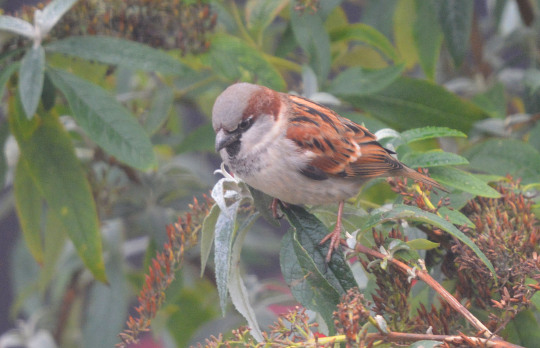

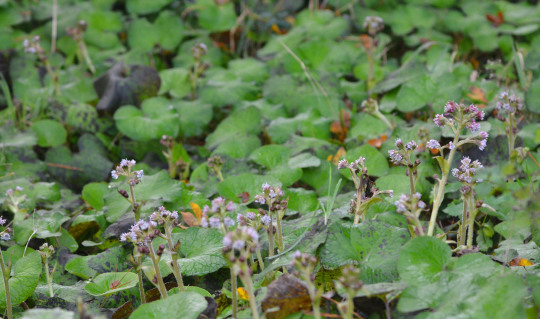
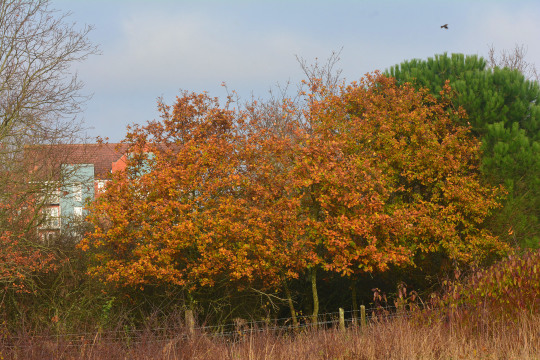
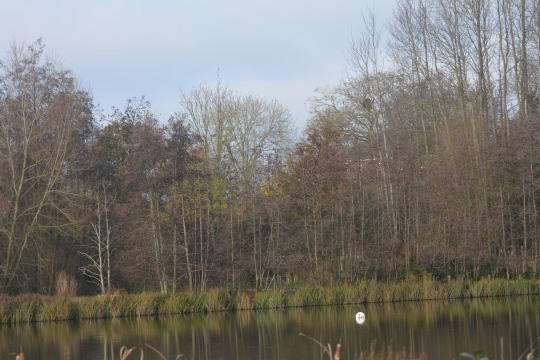

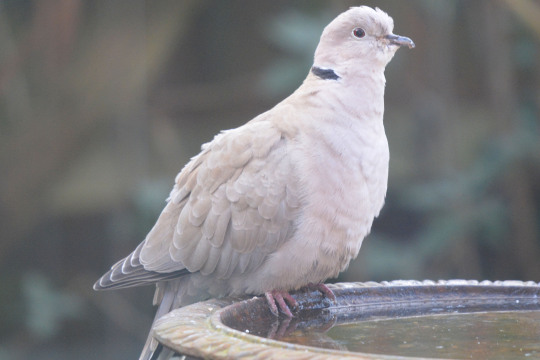
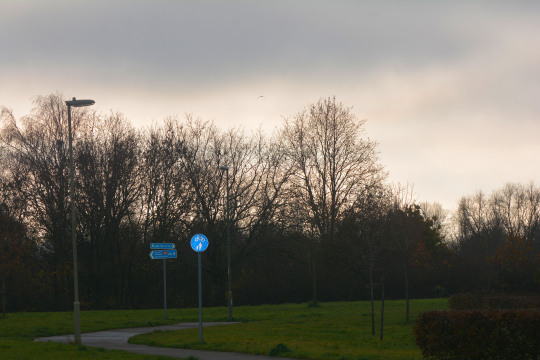
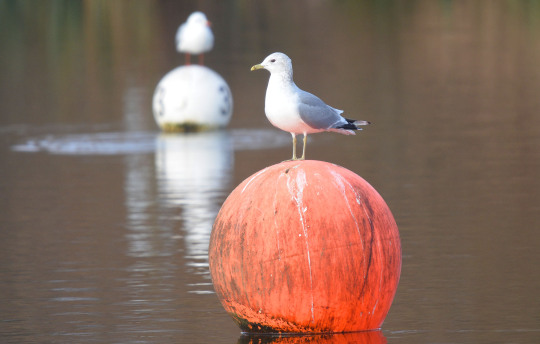
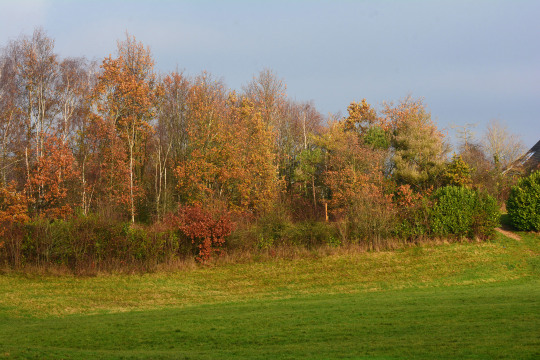
6th December 2023: Lakeside and home
Pictures taken in this set are of: 1. House Sparrow in the garden which it was nice to see. 2, 4, 5, 8 and 10. Views on my lunch time walk at Lakeside, it was great to see the stark bare branches with a backdrop of creamy winter sunlight. 3. Some of the dozens of winter heliotrope flowers I was pleased to find in the verge area near the road entrance to Lakeside, flowers I find pretty which seem to be out earlier this season. 6. One of a few beautiful Greenfinches I was over the moon to see along the northern path, a cheery emerald bird which I'd not seen here for a while. 7. A Collared Dove it was great to see on the bird bath when home from my walk. 9. The Common Gull on a buoy on beach lake with a Black-headed Gull behind.
Another green finch was a highlight with some Siskins seen and I also enjoyed seeing a Magpie fly over with some feathers lit well by the sun. Jackdaw at Lakeside and home and Jay enjoyed at Lakeside again were other good crows seen. Blue Tit, Great Tit, Robin, fine views of Redwing, Song Thrush and Blackbird again, Collared Dove at Lakeside, Great Crested Grebe, Coot and Moorhen at Lakeside with Greylag Geese flying over, Goldfinches and Starling at home were other highlights. White deadnettle, wild carrot and a fair few berries in rose hips, wild service tree berries I believe, hawthorn berries and guelder rose berries were other plant highlights today with rose hips enjoyed at home too.
#birdwatching#photography#flowers#rose hip#berries#winter heliotrope#home#lakeside#lakeside country park#walking#walk#2023#earth#nature#happy#hawthorn#december#coot#great crested grebe#white deadnettle#photos#collared dove#redwing#greenfinch#siskin#song thrush#europe
5 notes
·
View notes
Text
There's this species of grass in my front yard that's only like 6 inches tall with the seed pods and it's not very dense. The other plants are nice patches of native ground cover like henbit deadnettle, white clover, wood sorrel, chickweed, carolina AND dovesfoot geranium and also normal dandelions. There's also the stickergrass in the back and some prickly lettuce.
10 notes
·
View notes
Text
Last year we didn’t spray or water or weed the back yard. Mostly this was pure executive dysfunction but we were also kind of interested in seeing what would move in when we gave up on trying to grow grass that doesn’t belong here.
So far this year, we’ve seen a ton of henbit deadnettle, wild violets, chickweed, and yellow wood sorrel. The clover and ground cherries are moving in now. We’re leaving the dandelions to grow where they may so they can help break up our hard-packed clay soil. We’ve set up three huge beds to host native wildflowers, thanks to online nurseries that sell seeds and live plants.
There’s some initial investment: we need to water a little here and there to make sure our new weeds get established and I have to go around every day to pull up the problem children (mostly white mulberry and Amur honeysuckle, which are aggressive pests). But once everything gets going, the idea is we won’t need to mow or water, ever, and there will be exciting little visitors coming to eat seeds and drink nectar and what have you.
And we’ll have a miniature prairie in our back yard!
12 notes
·
View notes
Text
At least 5 wild edible plants right here! White clover, chickweed, purple deadnettle, wild violets, and stinging nettle 🤓

9 notes
·
View notes
Text
Chemically sterilized...or mechanically sterilized?
It is clear that applying chemicals to your yard and landscape, be it fertilizers, weed killers, or pesticides, has devastating effects to the community of life that is present in every place.
But is the terrifying decline in insects explainable by chemicals alone?
When i am in mowed environments, even those that I know have no lawn chemicals, they are almost entirely empty of life. There are a few bees and other insects on the dandelions, but not many, and the only birds I see are American robins, Grackles, and European starlings.
Even without any weed killers at all, regular mowing of a lawn type area eliminates all but a few specially adapted weeds.
The plants of a lawn where I live include: Mouse ear chickweed, Birds-eye Speedwell, Common blue violet, Dandelion, Wild Garlic, Creeping charlie, White Clover, Black Medick, Broad-leaved plantain, Mock Strawberry, Crabgrass, Small-flowered Buttercup, Ribwort Plantain, Daisy Fleabane, a few common sedges, Red Deadnettle...That sounds like a lot of plants, but the problem is, almost all of them are non-native species (Only Violets, Daisy Fleabane, and the sedges are native!) and it's. The Same. Species. Everywhere. In. Every. Place.
How come...? Because mowed turf is a really specific environment that is really specifically beneficial to a number of almost entirely European plants, and presents stressors that most plants (including almost all native north american plants) simply can't cope with.
The plants mentioned above are just the flowering weeds. The grasses themselves, the dominant component of the lawn, are essentially 100% invasive in North America, many of them virulently and destructively invasive.
Can you believe that Kentucky bluegrass isn't even native to Kentucky? Nope, it's European! The rich pasture of the Bluegrass region of Kentucky was predominantly a mix of clover, other legumes, and bamboo. The clovers—Kentucky clover, Running buffalo clover, and buffalo clover—are highly endangered now (hell, kentucky clover wasn't even DISCOVERED until 2013) and the bamboo—Giant rivercane, Arundinaria gigantea—has declined in its extent by 98%. Do European white and red clovers fulfill the niches that native clovers once did? Dunno, probably not entirely.
One of the biggest troubles with "going native" is that North America legitimately does not have native grass species that really fill the niche of lawn. Most small, underfoot grassy plants are sedges and they are made for shady environments, and they form tufts and fancy sprays, not creeping turf. Then there's prairie grasses which are 10 feet tall.
What this means, though, is that lawns don't even remotely resemble environments that our insects and birds evolved for. Forget invasive species, lawns are an invasive BIOME.
It's a terrible thing, then, that this is just what we do to whatever random land we don't cover in concrete: back yards, road margins, land outside of churches and businesses, spaces at the edges of fields, verges at bypasses and gas stations...
Mowing, in the north american biomes, selects for invasive species and promotes them while eliminating native species. There's no nice way to put it. The species that thrive under this treatment are invasive.
And unfortunately mowing is basically the only well-known and popular tool even for managing meadow and prairie type "natural" environments. If you want to prevent it from succeeding to forest, just mow it every couple of years.
This has awful results, because invasive species like Festuca arundinacea (a plant invented by actual Satan) love it and are promoted, and the native species are harmed.
Festuca arundinacea, aka Tall Fescue, btw is the main grass that you'll find in cheap seed mixes in Kentucky, but it's a horrific invasive species that chokes everything and keeps killing my native meadow plants. It has leaves like razor blades (it's cut me so deeply that it scarred) and has an endosymbiont in it that makes horses that eat it miscarry their foals.
And this stuff is ALL OVER the "prairie" areas where I work, like it's the most dominant plant by far, because it thrives on being mowed while the poor milkweeds, Rattlesnake Master and big bluestems slowly decline and suffer.
It's wild how hard it is to explain that mowing is a very specific type of stressor that many plants will respond very very negatively to. North American plants did not evolve under pressures that involved being squished, crushed, snipped to 8 inches tall uniformly and covered in a suffocating blanket of shredded plant matter. That is actually extremely bad for many of the prairie plants that are vital keystone species. Furthermore it does not control invasive species but rather promotes them.
Native insects need native plant cover. Many of them co-evolved intimately with particular host plants. Many others evolved to eat those guys. And Lord don't get me started on leaf removal, AKA the greatest folly of all humankind.
So wherever there is a mowed environment, regardless of the use of chemicals or not, the bugs don't have the structural or physical habitat characteristics they evolved for and they don't have the plant species they evolved to be dependent on.
Now let's think about three-dimensional space.
This post was inspired when I saw several red winged blackbirds in the unmowed part of a field perching on old stems of Ironweed and goldenrod. The red-winged blackbirds congregated in the unmowed part of the field, but the mowed part was empty. The space in a habitat is not just the area of the land viewed from above as though on a map. Imagine a forest, think of all the squirrels and birds nesting and sitting on branches and mosses and lichens covering the trunks and logs. The trees extend the habitat space into 3 dimensions.
Any type of plant cover is the same. A meadow where the plants grow to 3 feet tall, compared with a lawn of 6 inches tall, not only increases the quality of the habitat, it really multiplies the total available space in the habitat, because there is such a great area of stems and leaves for bugs and birds to be on. A little dandelion might form a cute little corner store for bugs, A six foot tall goldenrod? That's a bug skyscraper! It fits way more bugs.
It's not just the plants themselves, it's the fallen leaves that get trapped underneath them—tall meadow plants seem to gather and hoard fallen leaves underneath. More tall plants is also more total biomass, which is the foundation of the whole food chain!
Now consider light and shade. Even a meadow of 3ft tall plants actually shades the ground. Mosses grow enthusiastically even forming thick mats where none at all could grow in the mowed portions. And consider also amphibians. They are very sensitive to UV light, so even a frog that lives in what you see as a more "open" environment, can be protected by some tall flowers and rushes but unable to survive in mowed back yard
#anti lawn#kill your lawn#native plants#the ways of the plants#native plant gardening#plants#random#bitching about mowing again
877 notes
·
View notes
Text
White deadnettle (Lamium album) wildflower photo I took 08/10/2023, Wintersett, West Yorkshire, UK
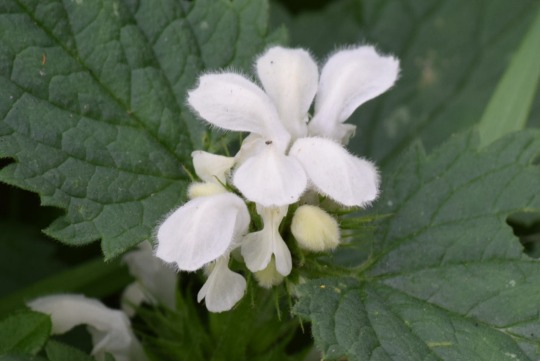
#nature#nature photography#wild#british nature#lamiaceae#lamiales#white flower#white flowers#white#wildflower photography#wildflower#wildflora#wildflowers#wild flowers#flora#flower#flowers#flower photography#wild plant#plant#plants#plant photography#plantblr#wild plants#botany#botanical#bloom#blooms#natural world#nettles
2 notes
·
View notes